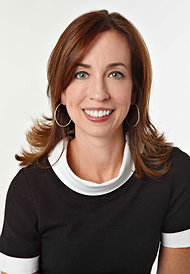 Bryan McCayDiane Malloy is the publisher of Ladies’ Home Journal.
Bryan McCayDiane Malloy is the publisher of Ladies’ Home Journal.
While women’s service magazines have long relied on readers to contribute content, from first-person accounts to recipes, Ladies’ Home Journal is taking that strategy to new lengths: beginning with the March issue, it will allow readers to produce the majority of its articles.
The 128-year-old magazine, with an average paid circulation of 3.2 million, would be the first major mass-market magazine to draw on user-generated content for most of its pages. It has proved to be a winning formula for other specialty magazines, including Taste of Home, where readers share recipes and food preparation tips. Ladies’ Home Journal will also introduce a new look.
To find amateur writers, the magazine’s editors are looking for contributions across the Web, including on its own Web site, its Facebook page and DivineCaroline.com, which is also owned by the Meredith Corporation and intended to gather stories from women on topics from parenting to beauty.
“We are marrying the authority of print to the authenticity of experience,” said Diane Malloy, who took over as publisher of the magazine in the fall. “We will have real women and their life experiences.”
Ms. Malloy said the approach came about after research showed the magazine’s readers wanted more of their voices reflected in the content and to feel as if they belonged to a community.
“It is reflective of real life,” Ms. Malloy said. “When you have a health issue or a sticky situation, you are likely to reach out to your community, your sister, your friend, your neighbor, your church.”
While most of the content will be user-generated, editors will continue to check facts in articles. Contributors will be paid the usual standard professional rates. And professional experts will also continue to provide advice, often alongside first-person accounts.
In an article for the March issue, for example, a woman describes her experience after discovering a lump in her breast. Running alongside the first-person account is a column by a health expert with advice on battling breast cancer.
Ellen Levine, editorial director of Hearst Magazines with women’s service titles that include Good Housekeeping, Woman’s Day and Seventeen, said that listening to readers and including their voices has long been a part of every magazine editor’s job. “Inviting your readers in and learning from them is what keeps you relevant,” she said.
But will this new editorial-content model aimed at building a community help fend off a decline in advertising revenue?
“Ladies’ Home Journal has always been about the empowerment of women,” said Robin Steinberg, executive vice president for publishing investment at Mediavest, the advertising agency. “This is a natural evolution of the brand based on the socialization of content. This platform and approach allows women to participate and contribute using modern technology and tools.”
Article source: http://feeds.nytimes.com/click.phdo?i=5312bc5a5ab7e0e16ec06212e808ead2
Speak Your Mind
You must be logged in to post a comment.